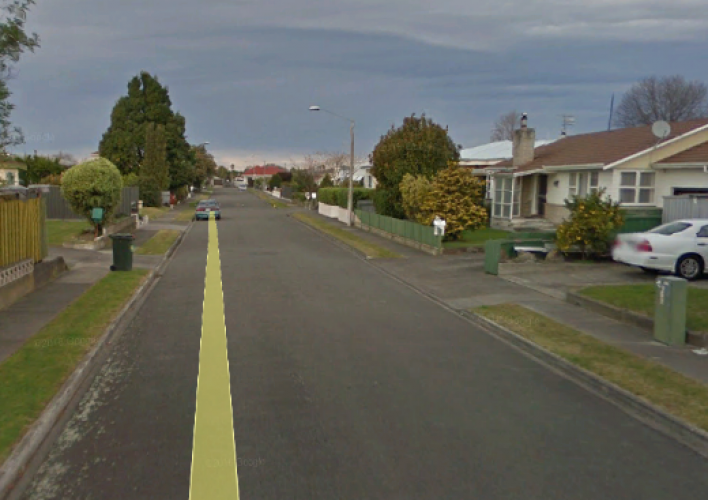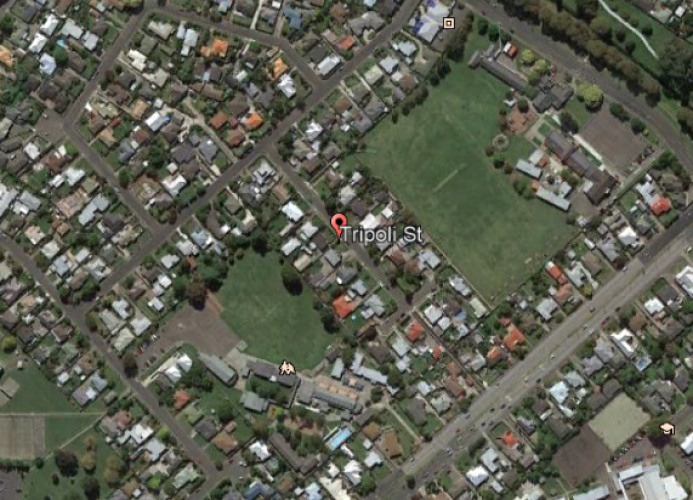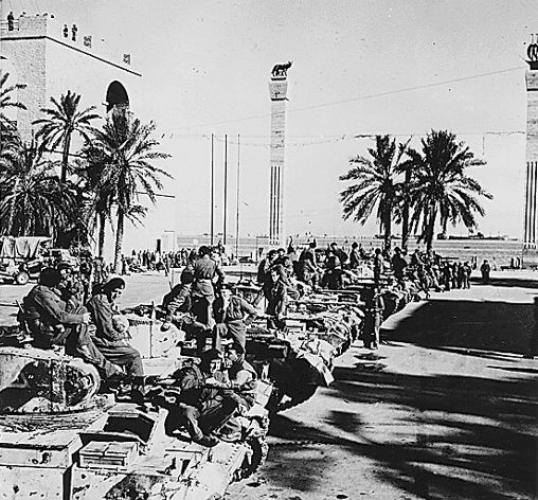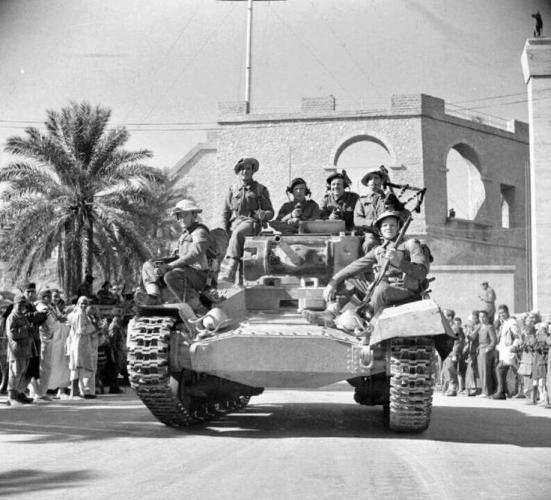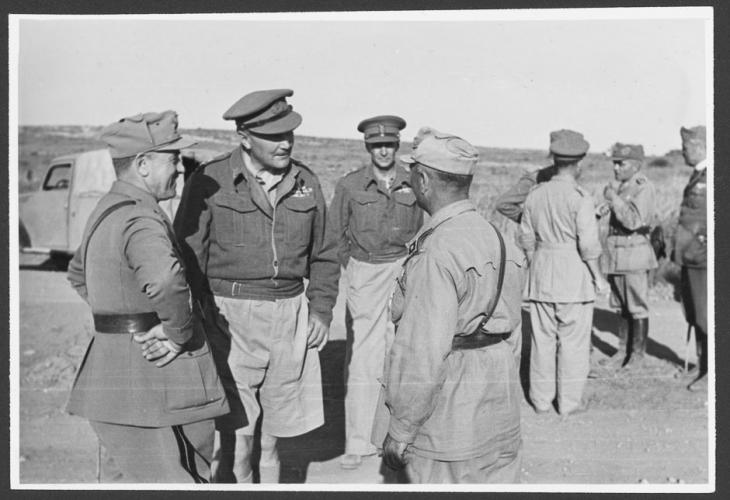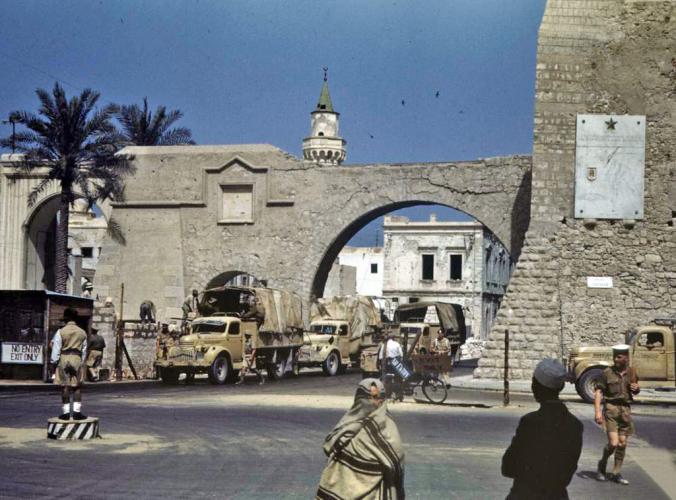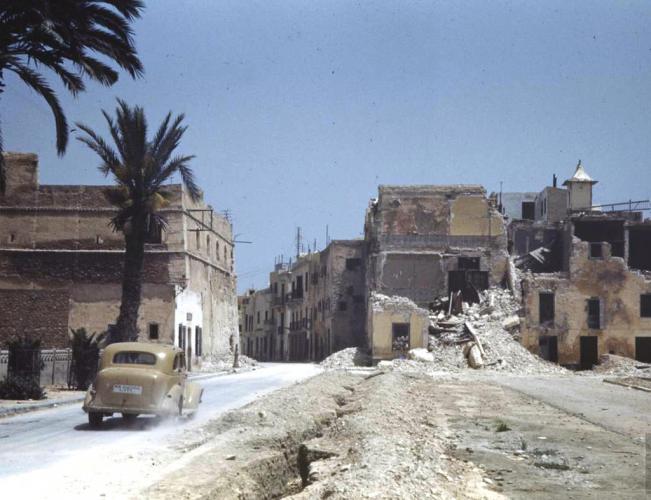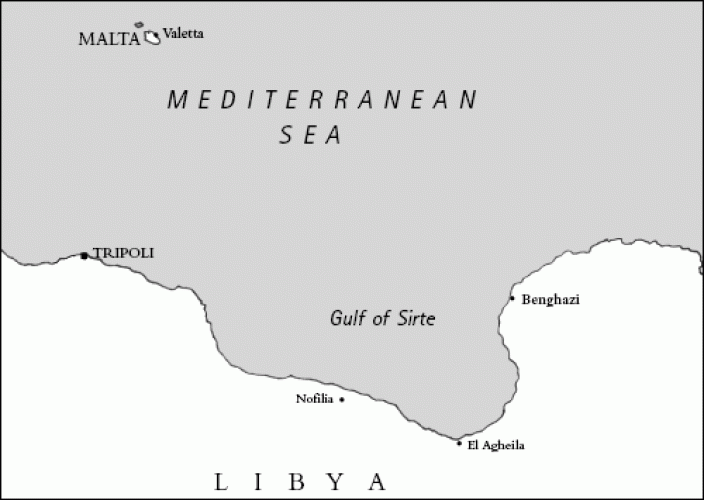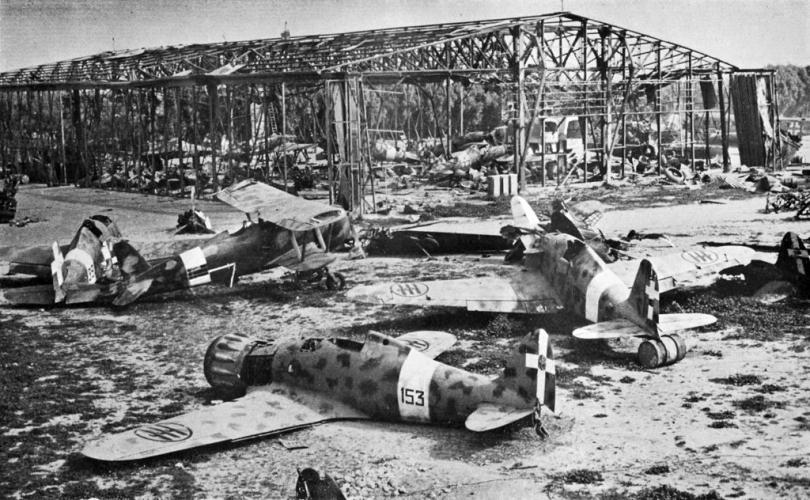194 Tripoli St Onekawa, street view 2018.
Reason for the name
This Napier street was named within a theme in Onekawa of honouring our overseas war service. The city of Tripoli was a major location captured towards the end of the African Desert campaign of WW2.
The Allies initially believed that the Middle East (Southwest Asia) could become a major operational theatre, because they thought that the Germans might invade the area. This did not materialise, although when Allied forces occupied much of the area, in anticipation of such an invasion, there was fighting against Vichy French forces in Lebanon and Syria, and against Iraq in the Anglo-Iraqi War which ended when Baghdad fell to British forces. The Italian forces in North Africa greatly outnumbered the British. However, Allied forces were able to not only defend against Italian incursions but also to defeat the defending Italians and take over their colonies in Ethiopia and Somaliland. By February 1941, Commonwealth forces appeared to be on the verge of overrunning the last Italian forces in Libya, which would have ended Axis control in all of Africa.
While the fighting was taking place in Libya, Axis forces were attacking Greece. The Allied commander, General Archibald Wavell, was ordered to stop his advance against Libya and send troops to Greece. He disagreed with this decision but followed his orders.
The Allies were unable to stop Greece falling to the Axis forces and before they could retake the initiative in the Western Desert, the German Afrika Korps had entered the theatre. It would not be until early in 1943, after another year and a half of hard fighting and mixed fortunes, that the Axis forces would be finally driven out of Libya and the theatre would again become Allied-controlled.
After the Allies' breakthrough at El Alamein in October 1942 the New Zealand Division helped pursue retreating German-Italian forces along the Libyan coast. On 23 January 1943 the New Zealanders were the first Commonwealth troops to enter the city of Tripoli. The Axis forces had fallen back into Tunisia, taking up defensive positions along the Mareth Line on the Tunisian-Libyan border. The New Zealand Division entered Tripoli on 23 January. As soon as engineers and naval forces cleared the devastated port, men from the division helped unload supply ships carrying food and equipment needed for the 8th Army’s advance.
The New Zealanders did not have long to savour the victory in Tunisia. On 15 May the first units began their nearly 3000 km drive back to Egypt, reflecting on battles fought and comrades lost. The last of the New Zealand Division reached Cairo on 1 June, cramming into camps at Maadi and Helwan. For 6000 of the longest-serving men, there was the prospect of an early return to New Zealand: they learned that they would go home on a three-month furlough.
Author: Poppy Places Trust
In 1939 some Libyans were granted special (though limited) Italian citizenship by Royal Decree No. 70 on 9 January 1939. This citizenship was necessary for any Libyan with ambitions to rise in the military or civil organizations. The recipients were officially referred to as Moslem Italians. Libya had become the fourth shore of Italy” (Trye 1998). The incorporation of Libya into the Italian Empire gave the Italian Army a greater ability to exploit native Libyans for military service. Native Libyans served in Italian formations from the beginning of the Italian occupation of Libya. On 1 March 1940, the 1st and 2nd Libyan Divisions were formed. These Libyan Infantry divisions were organized along the lines of the binary Italian infantry division. The 5th Italian Army received the 2nd Libyan Infantry division which it incorporated into the 13th corps. The Italian 10th Army received the 1st Libyan Infantry Division which it incorporated into the reserve. The Italian Libyan infantry divisions were colonial formations ("colonial" in the sense of consisting of native troops). These formations had Italian officers commanding them with Libyan NCOs and soldiers. These native Libyan formations were made up of people drawn from the coastal Libyan populations. The training and readiness of these divisions was on an equal footing with the regular Italian formations in North Africa. Their professionalism and 'esprit de corps' made them some of the best Italian infantry formations in North Africa. The Libyan divisions were loyal to Italy and provided a good combat record.
After the enlargement of Italian Libya with the Aouzou Strip, Fascist Italy aimed at further extension to the south. Indeed Italian plans, in the case of a war against France and Great Britain, projected the extension of Libya as far south as Lake Chad and the establishment of a broad land bridge between Libya and Italian East Africa. During World War II, there was strong support for Italy from many Muslim Libyans, who enrolled in the Italian Army. Other Libyan troops (the Savari [cavalry regiments] and the Spahi or mounted police) had been fighting for the Kingdom of Italy since the 1920s. A number of major battles took place in Libya during the North African Campaign of World War II. In September 1940, the Italian invasion of Egypt was launched from Libya.
Starting in December of the same year, the British Eighth Army launched a counterattack called Operation Compass and the Italian forces were pushed back into Libya. After losing all of Cyrenaica and almost all of its Tenth Army, Italy asked for German assistance to aid the failing campaign
With German support, the lost Libyan territory was regained during Operation Sonnenblume and by the conclusion of Operation Brevity, German and Italian forces were entering Egypt. The first Siege of Tobruk in April 1941 marked the first failure of Rommel's Blitzkrieg tactics. In 1942 there was the Battle of Gazala, when the Axis troops finally conquered Tobruk and pushed the defeated British troops inside Egypt again. Defeat during the Second Battle of El Alamein in Egypt spelled doom for the Axis forces in Libya and meant the end of the Western Desert Campaign.
In February 1943, retreating German and Italian forces were forced to abandon Libya as they were pushed out of Cyrenaica and Tripolitania, thus ending Italian jurisdiction and control over Libya.


